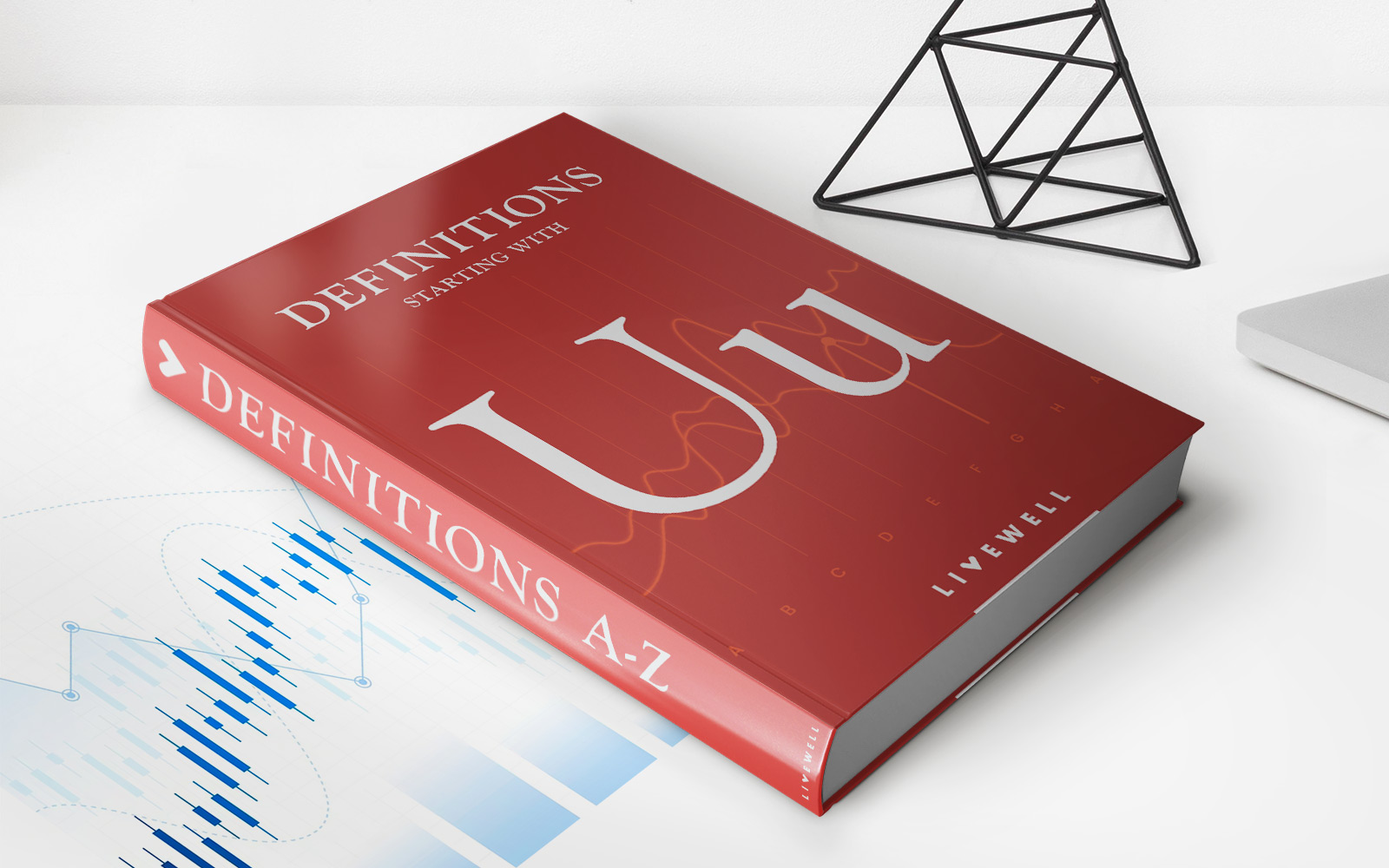Home>Finance>What Is The Best Option For Retirement Planning


Finance
What Is The Best Option For Retirement Planning
Published: January 21, 2024
Looking for the best option for retirement planning? Explore finance strategies and tips to secure your financial future with expert guidance.
(Many of the links in this article redirect to a specific reviewed product. Your purchase of these products through affiliate links helps to generate commission for LiveWell, at no extra cost. Learn more)
Table of Contents
Introduction
When it comes to retirement planning, choosing the best option can be overwhelming. With a wide variety of choices available, it’s important to understand the different options and their potential advantages and disadvantages.
Retirement planning is crucial for ensuring financial security and independence during your golden years. It involves making strategic decisions about how you will accumulate and grow your savings, as well as how you will manage your income during retirement.
In this article, we will explore some of the most popular retirement planning options, including Social Security, employer-sponsored retirement plans, individual retirement accounts (IRAs), annuities, real estate investments, stock market investments, savings accounts, health savings accounts (HSAs), defined benefit plans, and personal savings and investments.
It’s important to note that there is no one-size-fits-all solution for retirement planning. The best option for you will depend on your individual circumstances, risk tolerance, and financial goals. It’s always a good idea to consult with a financial advisor who can provide personalized guidance based on your specific needs.
Now, let’s dive into each retirement planning option in more detail to help you make an informed decision for your future.
Social Security
Social Security is a government program designed to provide retirement benefits to individuals who have contributed to the system through payroll taxes during their working years. It serves as a foundation for many retirees’ income in their golden years.
To qualify for Social Security benefits, you must have earned a certain number of credits by paying into the system over your working career. The amount of credits required depends on your birth year. Once you are eligible, you can begin receiving benefits as early as age 62, though the full retirement age for receiving your maximum benefit varies based on your birth year.
The amount of your Social Security benefit is determined by your earnings history and the age at which you start receiving benefits. Generally, the longer you wait to start receiving benefits, the higher your monthly benefit amount will be. However, you can begin receiving reduced benefits as early as age 62.
While Social Security is a valuable source of retirement income, it’s important to note that it may not be enough to cover all your expenses. The average benefit payment is modest, and the program is also facing financial challenges in the long term.
Therefore, it’s essential to have other sources of income and savings to support your retirement lifestyle. This is where additional retirement planning options come into play, such as employer-sponsored retirement plans and individual retirement accounts (IRAs).
In summary, Social Security is an important component of retirement planning, but it should not be relied upon as the sole source of income. It’s recommended to supplement your Social Security benefits with other retirement savings and investment vehicles to ensure a comfortable and secure retirement.
Employer-Sponsored Retirement Plans
Employer-sponsored retirement plans, such as 401(k) plans and 403(b) plans, are another popular option for retirement planning. These plans are offered by employers to help employees save for retirement on a tax-advantaged basis.
One of the primary benefits of employer-sponsored retirement plans is the opportunity for employees to contribute a portion of their pre-tax income to the plan. This reduces their taxable income and allows their contributions to grow tax-deferred until withdrawal during retirement.
Many employers also offer a matching contribution where they match a portion of the employee’s contributions to the plan. This is essentially free money and can significantly boost your retirement savings over time.
Another advantage of these plans is the relatively high contribution limits. For 2021, the maximum annual contribution limit for a 401(k) or 403(b) plan is $19,500, with an additional catch-up contribution of $6,500 for those aged 50 or older. These limits give individuals the opportunity to save a substantial amount for retirement.
Furthermore, employer-sponsored retirement plans offer investment options to choose from, typically including a range of mutual funds and other investment vehicles. This allows employees to customize their portfolios based on their risk tolerance and investment goals.
One important consideration with these plans is that there may be vesting requirements for employer contributions. This means that you may need to work for a certain number of years before you are fully entitled to your employer’s matching contributions.
If you change jobs, you may have options for what to do with your employer-sponsored plan. You can generally choose to leave the money in the plan, roll it over to an IRA or your new employer’s plan, or cash out the funds. It’s important to evaluate the pros and cons of each option and consider any tax implications before making a decision.
Overall, employer-sponsored retirement plans provide a convenient and tax-efficient way to save for retirement. They offer the benefits of tax-deferred growth, potential employer matching contributions, and investment options. Taking advantage of these plans can help you build a solid foundation for a financially secure retirement.
Individual Retirement Accounts (IRAs)
Individual Retirement Accounts (IRAs) are another popular retirement planning option that individuals can utilize to save and invest for their future. IRAs provide a way to grow your savings tax-advantaged until you reach retirement age.
There are two main types of IRAs: traditional IRAs and Roth IRAs.
With a traditional IRA, your contributions are typically tax-deductible in the year they are made. This means that you can reduce your taxable income by the amount you contribute to the IRA. The contributions and any investment earnings grow tax-deferred until you withdraw the funds in retirement. At that time, the withdrawals are subject to income taxes.
Roth IRAs, on the other hand, offer a different tax advantage. Contributions to a Roth IRA are made with after-tax dollars, meaning that they are not tax-deductible upfront. However, the growth and qualified withdrawals in retirement are tax-free. This can provide significant tax advantages in retirement, as you won’t owe taxes on the withdrawals.
One advantage of IRAs is the flexibility in investment choices. With an IRA, you have the option to invest in a wide range of assets, including stocks, bonds, mutual funds, and more. This allows you to diversify your holdings and potentially achieve higher returns over time.
Contributions to IRAs are subject to annual contribution limits, which are set by the IRS. For 2021, the maximum annual contribution limit for both traditional and Roth IRAs is $6,000, with an additional $1,000 catch-up contribution allowed for individuals aged 50 and older.
It’s important to note that there are eligibility requirements for IRAs. For example, individuals must have earned income to contribute to an IRA, and there are income limits for Roth IRA contributions. Additionally, there are rules regarding early withdrawals before the age of 59 ½, which may incur penalties and taxes.
When it comes to planning for retirement, IRAs offer individuals additional flexibility and control over their savings. They provide tax advantages and the opportunity for a diversified investment portfolio. Consider working with a financial advisor to determine which type of IRA is best suited to your financial goals and needs.
Roth IRAs
Roth IRAs are a popular type of individual retirement account (IRA) that offer unique tax advantages for retirement savings. With a Roth IRA, contributions are made with after-tax dollars, meaning that you don’t receive an immediate tax deduction for your contributions. However, the growth and qualified withdrawals from a Roth IRA are completely tax-free.
One of the significant benefits of a Roth IRA is that your qualified withdrawals in retirement are tax-free. This can provide a significant advantage, especially if you anticipate being in a higher tax bracket in retirement or if tax rates increase in the future. Additionally, since you’ve already paid taxes on your contributions, you have the flexibility to withdraw your contributions at any time without incurring taxes or penalties.
Another advantage of Roth IRAs is that they are not subject to required minimum distributions (RMDs) during the account owner’s lifetime. Unlike traditional IRAs that require you to start withdrawing a certain amount of money once you reach a certain age, Roth IRAs allow you to keep your funds invested and growing tax-free for as long as you wish.
In order to contribute to a Roth IRA, you must meet certain income eligibility requirements. For 2021, the income limits for Roth IRA contributions phase out for individuals earning between $125,000 and $140,000, and for married couples filing jointly earning between $198,000 and $208,000. However, even if you exceed these income limits, you may still be able to contribute to a Roth IRA through a backdoor Roth IRA conversion.
Roth IRAs also offer investment flexibility, allowing you to choose from a wide range of investments such as stocks, bonds, mutual funds, and exchange-traded funds (ETFs). This flexibility enables you to create a diversified portfolio based on your risk tolerance and investment goals.
In summary, Roth IRAs provide a unique opportunity for tax-free growth and withdrawals in retirement. They offer flexibility, no required minimum distributions, and investment options. Consider consulting with a financial advisor to determine if a Roth IRA is the right choice for your retirement planning strategy.
Annuities
Annuities are financial products that can play a role in retirement planning by providing a steady stream of income in exchange for a lump sum payment or regular contributions. Annuities are typically offered by insurance companies.
There are different types of annuities, including fixed annuities and variable annuities.
Fixed annuities provide a guaranteed income stream for a specific period or for the rest of your life. The insurance company invests the funds and guarantees a fixed interest rate or fixed payments. This can provide stability and predictability in retirement income.
Variable annuities, on the other hand, allow you to invest your contributions in a variety of investment options such as stocks, bonds, or mutual funds. The return on your investment will vary based on the performance of the underlying investments. Variable annuities carry more risk but also have the potential for higher returns.
One advantage of annuities is the ability to receive regular, predictable income during retirement, which can provide peace of mind and help cover living expenses. Annuities can be structured to provide income for a specific period or for your lifetime, ensuring that you will not outlive your savings.
Another advantage of annuities is the tax-deferred growth of your investment. Unlike other investment options, annuities allow you to defer taxes on the growth of your investment until you start receiving income payments, potentially allowing your funds to grow more rapidly.
It’s important to note that annuities can come with fees and surrender charges, which can eat into your returns. It’s crucial to carefully review the terms and conditions of any annuity contract and understand the costs involved before making a decision.
Annuities may not be suitable for everyone. They are generally recommended for individuals who have maximized contributions to other retirement accounts, such as IRAs and 401(k) plans, and are looking for additional retirement income sources.
Overall, annuities can provide a reliable and predictable income stream in retirement. However, they should be considered as part of a comprehensive retirement plan and should be evaluated alongside other investment options and financial goals.
Real Estate Investments
Real estate investments have long been a popular choice for individuals looking to build wealth and generate income, and they can also play a significant role in retirement planning. Investing in real estate offers the potential for both appreciation and cash flow, making it an attractive option for long-term wealth accumulation.
One of the main benefits of real estate investments is the opportunity for appreciation. Over time, real estate has historically increased in value, allowing investors to build equity and potentially sell the property for a profit in the future.
In addition to appreciation, real estate investments can generate ongoing income through rental properties. By investing in residential or commercial properties, individuals can rent out the space and receive monthly rental payments. This can provide a steady stream of income that can supplement other retirement savings.
Real estate also offers diversification to an investment portfolio. It is considered an alternative asset class, which means it has a low correlation to traditional investments such as stocks and bonds. Including real estate in your portfolio can potentially reduce overall investment risk and provide a hedge against market volatility.
Another advantage of real estate investments is the potential for tax benefits. Rental property owners can deduct various expenses, such as property taxes, insurance, maintenance costs, and mortgage interest, from their rental income. This can help reduce the tax burden and increase the net income from the investment.
However, it’s important to note that real estate investments come with their own set of challenges and considerations. Property management, maintenance, and vacancy risks are some of the factors that need to be carefully considered when investing in real estate. Additionally, real estate investments typically require a significant amount of capital and may not offer the same level of liquidity as other investment options.
When investing in real estate for retirement planning, it’s important to have a well-thought-out strategy and perform thorough analysis. Consider working with a real estate professional who can provide guidance on property selection, market trends, and rental potential.
In summary, real estate investments can be a valuable addition to a retirement portfolio. They offer the potential for appreciation, consistent rental income, diversification, and potential tax benefits. As with any investment, it’s important to conduct thorough research and evaluate the risks and rewards before making any investment decisions.
Stock Market Investments
Stock market investments have long been a popular option for individuals looking to build wealth and achieve their long-term financial goals, including retirement. Investing in stocks provides the opportunity to participate in the growth and success of various companies and sectors.
One of the primary advantages of stock market investments is the potential for capital appreciation. Over the long term, stocks have historically generated higher returns compared to other investment options. By investing in well-established companies or diversified portfolios of stocks, individuals have the opportunity to grow their wealth over time.
Furthermore, stock investments can provide a regular stream of income through dividends. Many companies distribute a portion of their earnings to shareholders in the form of dividends. This can serve as a reliable source of income during retirement when structured appropriately.
Another benefit of stock market investments is the liquidity they offer. Unlike certain investments, such as real estate, stocks can be easily bought and sold on stock exchanges. This makes it convenient for investors to access their funds when needed or make changes to their investment portfolio.
Furthermore, investing in stocks provides the opportunity to diversify your portfolio effectively. By investing in different industries and sectors, individuals can reduce the risk of having all their investments tied to a single company or sector. Diversification can enhance portfolio stability and potentially mitigate losses during market downturns.
However, it’s important to note that stock market investments also come with risks. The stock market can be volatile, with prices fluctuating based on various factors, including economic conditions, company performance, and investor sentiment. It’s crucial to have a long-term investment strategy and be prepared to withstand market fluctuations.
Investors interested in stock market investments should consider their risk tolerance, investment time horizon, and financial goals. It can be helpful to seek guidance from a financial advisor who can provide personalized advice and assist in creating a well-diversified portfolio based on individual circumstances.
In summary, stock market investments can be a valuable part of a retirement plan, offering the potential for capital appreciation, dividend income, liquidity, and portfolio diversification. It’s important to approach stock market investing with a long-term mindset and to carefully evaluate investment opportunities based on individual goals and risk tolerance.
Savings Accounts
Savings accounts are a fundamental and accessible option for individuals looking to save for retirement. They offer a secure and low-risk way to keep your money while earning interest.
One of the primary advantages of savings accounts is the ease of use and accessibility. They can be opened at most banks and financial institutions, allowing you to deposit and withdraw funds with ease. This makes them a convenient option for setting aside money specifically for retirement.
Another benefit of savings accounts is that they are insured by the Federal Deposit Insurance Corporation (FDIC) in the United States, providing protection for your deposits up to $250,000 per depositor, per bank. This means that even in the event of bank failure, your funds are protected and you won’t lose your savings.
Furthermore, savings accounts offer interest on your deposits, allowing your money to grow over time. While the interest rates offered by savings accounts may be lower compared to other investment options, they come with lower risk and provide stability for your retirement savings.
Savings accounts also provide flexibility in terms of how and when you can access your funds. Unlike other retirement savings options, such as employer-sponsored retirement plans or annuities, there are generally no restrictions on when you can withdraw from a savings account. This can be especially beneficial for individuals who may need to tap into their savings for unforeseen expenses or emergencies.
However, it’s important to consider that because savings accounts offer lower interest rates, they may not provide the same level of growth potential as other investment options, such as stocks or real estate. Additionally, the interest earned on savings accounts is taxable as income, which can impact the overall return on your investments.
In summary, savings accounts provide a stable and accessible option for individuals looking to save for retirement. They offer safety, liquidity, and the potential for modest interest earnings. While they may not provide substantial growth potential, they can be a valuable component of a diversified retirement savings strategy.
Health Savings Accounts (HSAs)
Health Savings Accounts (HSAs) are specialized savings accounts that offer unique tax advantages for individuals with high-deductible health insurance plans. While primarily intended to cover current and future healthcare expenses, HSAs can also serve as a valuable retirement planning tool.
One key advantage of HSAs is the ability to contribute funds on a pre-tax or tax-deductible basis. Contributions made to an HSA are tax-deductible, reducing your taxable income for the year. Additionally, any earnings and interest on your HSA funds grow tax-free, and qualified withdrawals for eligible medical expenses are also tax-free.
HSAs offer the flexibility to save for both immediate healthcare needs and long-term retirement expenses. The funds in your HSA can be used to pay for a wide range of medical expenses, including doctor visits, prescription medications, and medical procedures. However, unlike Flexible Spending Accounts (FSAs), HSAs do not have a “use it or lose it” provision, allowing you to carry over any unused funds year after year.
Furthermore, once you reach retirement age, you can continue to use your HSA funds for qualified medical expenses and enjoy tax-free withdrawals. However, you can also choose to use the funds for non-medical expenses, subject to income tax, much like a traditional IRA or 401(k) account.
The combination of tax advantages and the potential for long-term growth makes HSAs an attractive retirement planning option. By contributing to an HSA and allowing your funds to grow over time, you can build a robust nest egg to cover future healthcare costs during retirement.
It’s important to note that there are annual contribution limits for HSAs, which are set by the IRS. For 2021, the maximum annual contribution limit for individuals is $3,600, and for families, it is $7,200. If you are age 55 or older, you may be eligible to make an additional catch-up contribution of $1,000.
HSAs are available to individuals who are covered by a high-deductible health insurance plan. If you have a qualifying health insurance plan and meet the eligibility requirements, opening an HSA can be a strategic way to save for both healthcare expenses and retirement.
Overall, Health Savings Accounts offer a unique combination of tax advantages and flexibility for individuals with high-deductible health insurance plans. They can serve as a valuable tool for saving for healthcare expenses both now and in retirement, providing a tax-efficient solution to manage medical costs while building retirement wealth.
Defined Benefit Plans
Defined Benefit Plans, also known as traditional pension plans, are retirement plans offered by employers that provide a guaranteed income stream during retirement. Unlike other retirement plans, such as 401(k) plans or IRAs, defined benefit plans specify the amount of retirement income you will receive based on a formula that takes into account factors such as your salary, years of service, and age.
One of the primary advantages of defined benefit plans is the certainty of income that they provide. These plans offer a predictable retirement benefit, ensuring that you will receive a specific amount of income for the rest of your life once you reach the eligible retirement age determined by the plan.
Another significant advantage of defined benefit plans is that the investment risk is borne by the employer, not the employee. The employer is responsible for managing the plan’s investments and ensuring that there are sufficient funds to meet the future retirement benefit obligations.
Furthermore, defined benefit plans typically offer survivor benefits, which can provide financial security for your spouse or beneficiaries in the event of your death. These survivor benefits can take the form of a reduced lifetime benefit for your spouse or a lump-sum payment.
However, not all individuals have access to defined benefit plans. These plans are more commonly offered by government organizations and large corporations, while smaller companies may offer alternative retirement plans like defined contribution plans.
It’s important to note that defined benefit plans often have strict vesting requirements, meaning that you may need to work for a certain number of years before you are entitled to the full benefits. If you leave your employer before becoming fully vested, you may only be eligible for a portion of the accrued benefits.
Additionally, defined benefit plans may not provide as much control and flexibility as other retirement options. You generally do not have the ability to choose how your contributions are invested or access the funds before the designated retirement age without incurring penalties.
Overall, defined benefit plans can offer a stable and predictable retirement income for individuals who have access to them. They provide peace of mind and assurance that a specific amount of income will be received throughout retirement. If you have a defined benefit plan available to you, it’s important to understand the terms and benefits associated with the plan to fully take advantage of this valuable retirement option.
Personal Savings and Investments
Personal savings and investments are a crucial component of retirement planning. While there are various retirement-specific accounts and plans available, building your own savings and investment portfolio allows for flexibility and control in tailoring your retirement strategy to meet your individual needs and goals.
One of the primary benefits of personal savings and investments is the ability to customize your approach. You have the freedom to allocate your funds across different investment vehicles, such as stocks, bonds, mutual funds, real estate, and more, based on your risk tolerance, financial goals, and time horizon. This flexibility allows you to adjust your investments as needed and take advantage of market opportunities.
Personal savings and investments also provide liquidity, allowing you to access your funds whenever necessary. This can be beneficial in situations such as emergency expenses or unforeseen circumstances that may require a quick infusion of cash. Having readily available savings can provide peace of mind and financial security during retirement.
Another advantage of personal savings and investments is the potential for higher returns compared to traditional savings accounts. While savings accounts offer safety and stability, they often have lower interest rates. By diversifying your investments and taking on calculated risks, you have the opportunity to achieve higher growth and build a more substantial retirement nest egg.
However, it’s important to consider that personal savings and investments also come with risks. Depending on your chosen investment vehicles, your investments may be subject to market volatility and fluctuations. It’s crucial to conduct thorough research, stay informed about market trends, and regularly review and adjust your investment strategy as needed.
Personal savings and investments are not limited to retirement accounts or specialized plans, making them accessible to anyone who has the means to save and invest. While it’s important to take advantage of tax-advantaged retirement accounts, such as IRAs and employer-sponsored plans, personal savings and investments can supplement these accounts and provide additional funds to support your retirement goals.
In summary, personal savings and investments are a vital component of retirement planning. They provide flexibility, control, and potential for higher returns. By building your savings and investment portfolio, you can tailor your retirement approach to align with your specific circumstances and aspirations, helping you achieve a financially secure and comfortable retirement.
Conclusion
Retirement planning is a critical aspect of ensuring financial security and independence during your golden years. With a multitude of options available, it’s essential to understand the various retirement planning tools and choose the ones that align with your goals and circumstances.
Throughout this article, we have explored several popular retirement planning options. Social Security provides a foundation of income, but additional sources are often necessary. Employer-sponsored retirement plans, such as 401(k) plans, offer the benefit of pre-tax contributions and potential employer matching. Individual Retirement Accounts (IRAs) provide tax advantages and investment flexibility, with options like traditional IRAs and Roth IRAs.
Annuities offer guaranteed income and tax deferral, while real estate investments provide the potential for appreciation, rental income, and diversification. Stock market investments offer growth potential, dividend income, and liquidity. Savings accounts provide accessibility and stability, while Health Savings Accounts (HSAs) offer tax advantages for healthcare expenses during retirement.
Defined benefit plans provide a guaranteed retirement income, although they may not be available to everyone. Additionally, personal savings and investments allow for flexibility, customization, and diversification.
It is important to remember that there is no one-size-fits-all solution for retirement planning. Your individual circumstances, risk tolerance, and financial goals will influence the best options for you. Consider consulting with a financial advisor who can provide personalized guidance and help create a comprehensive retirement plan tailored to your specific needs.
In conclusion, a well-rounded retirement plan may include a combination of these options, leveraging the strengths of each to build a solid foundation for your future. Whether it’s utilizing employer-sponsored retirement plans, maximizing contributions to IRAs, diversifying through real estate and stock market investments, or accumulating personal savings, a thoughtful and proactive approach to retirement planning is essential.
By taking the time to educate yourself, working with a financial advisor, and regularly assessing and adjusting your retirement strategy, you can strive for financial stability, independence, and a fulfilling retirement that aligns with your dreams and aspirations.














